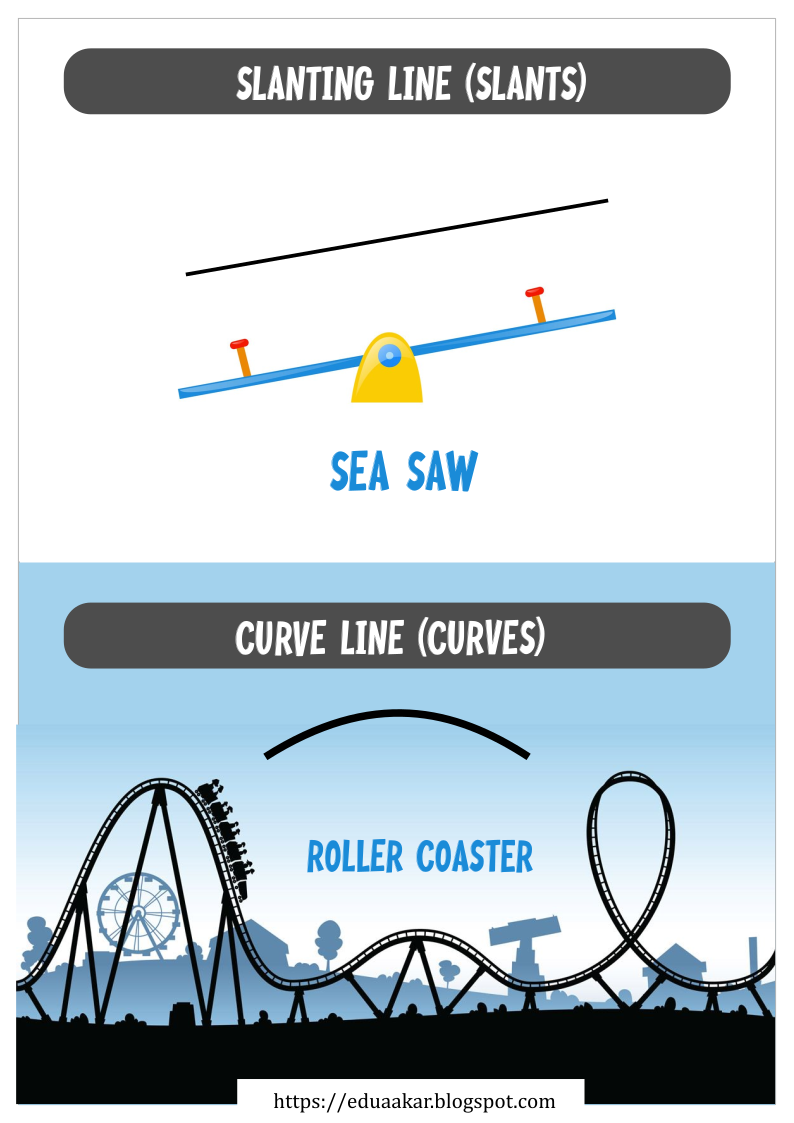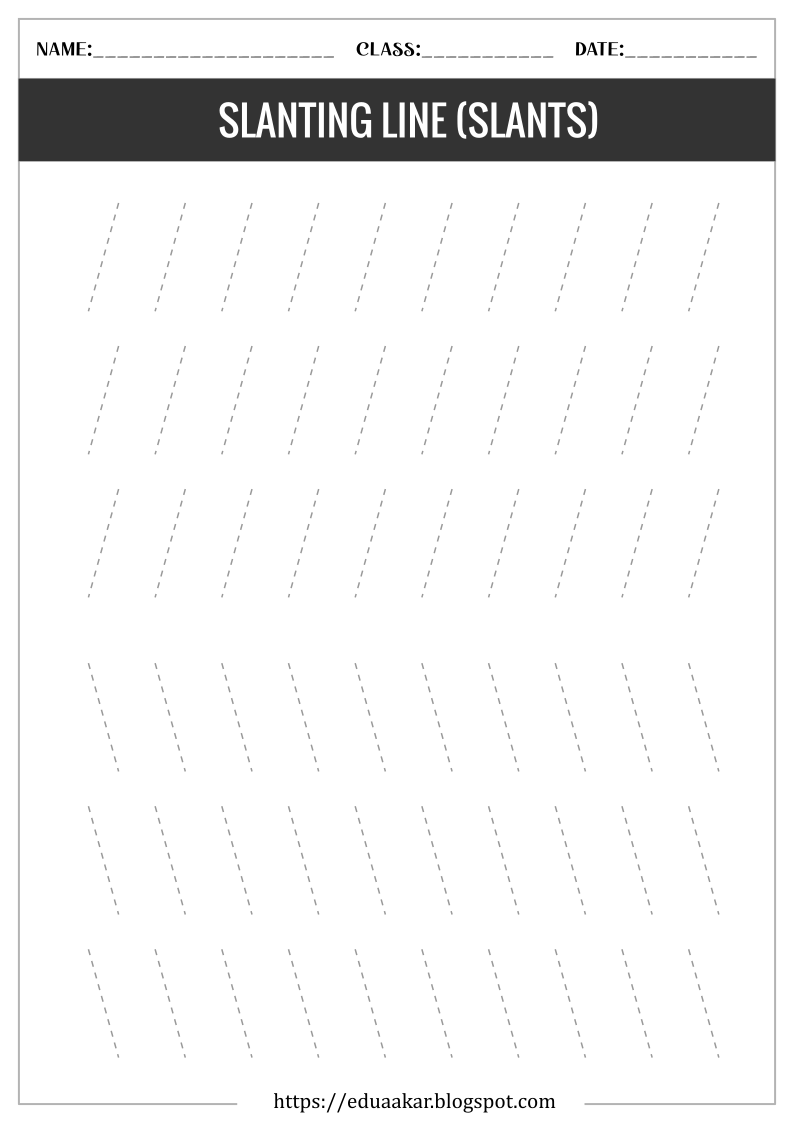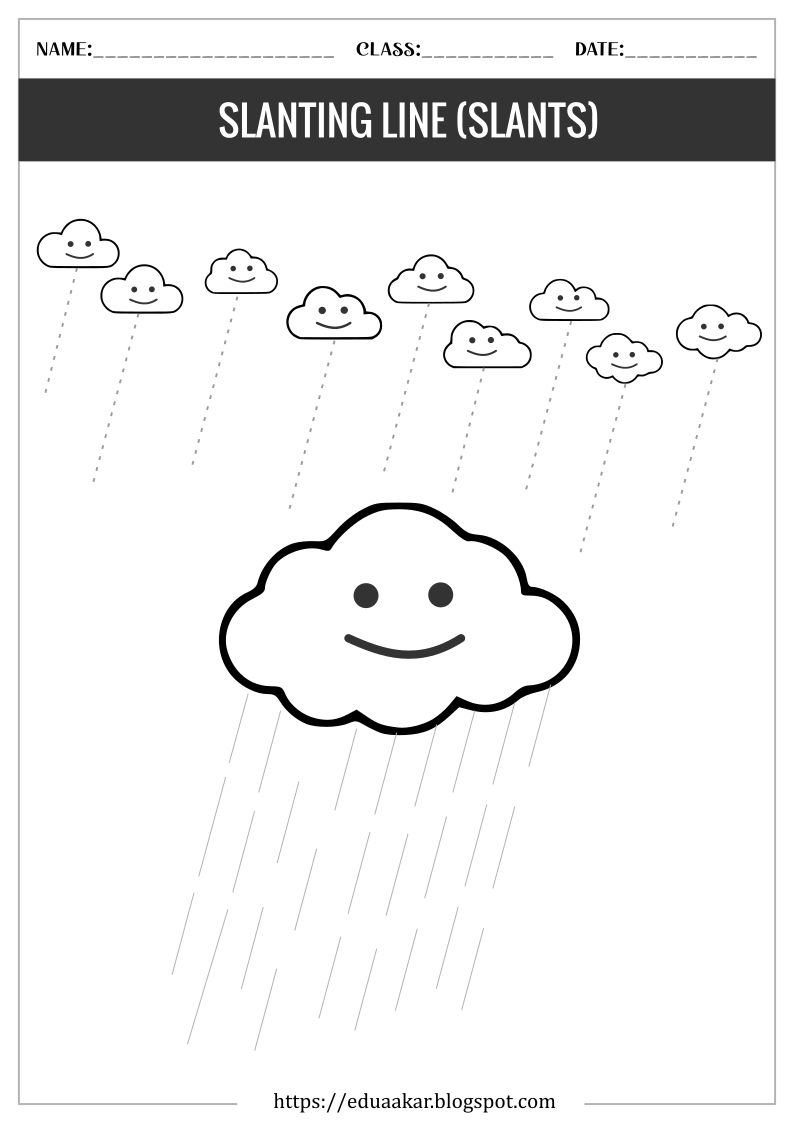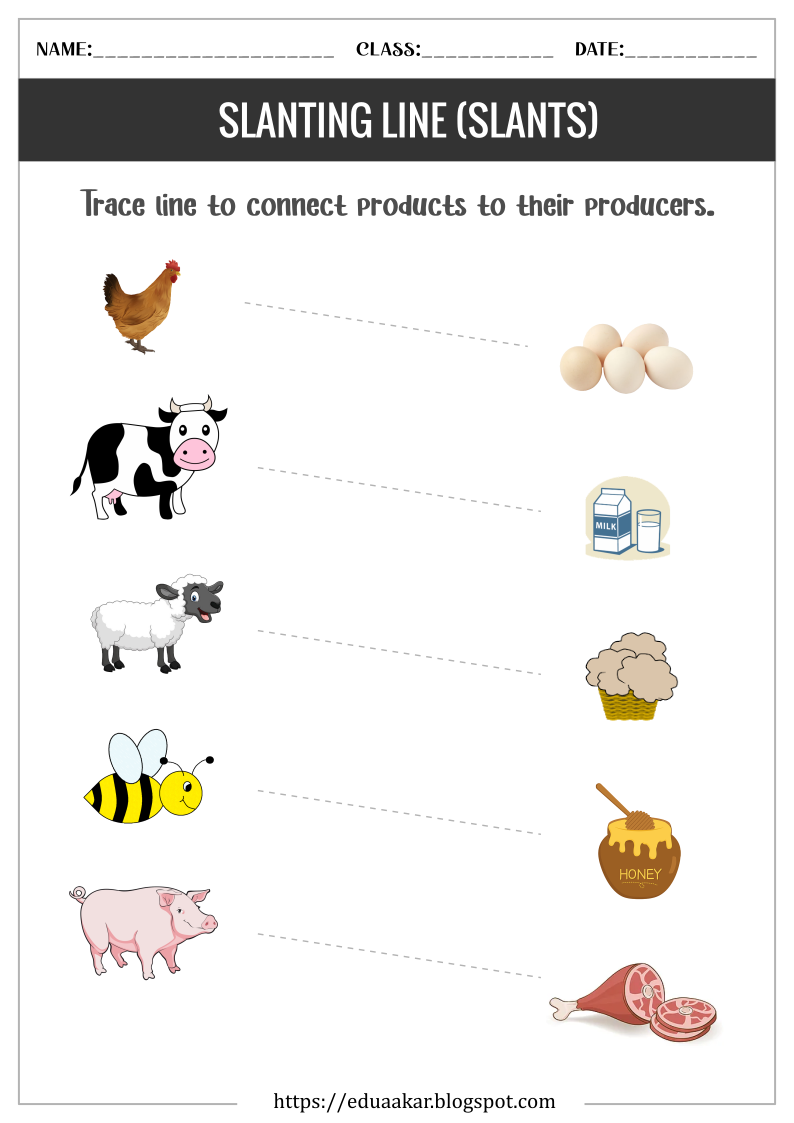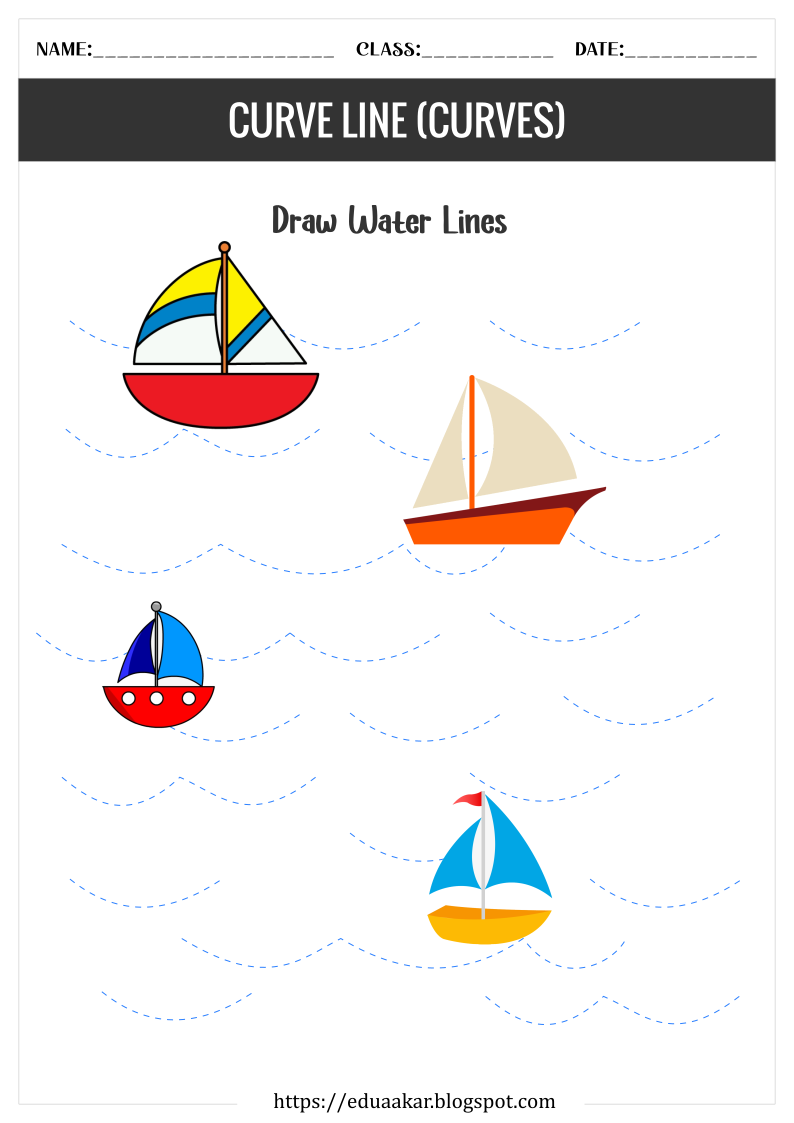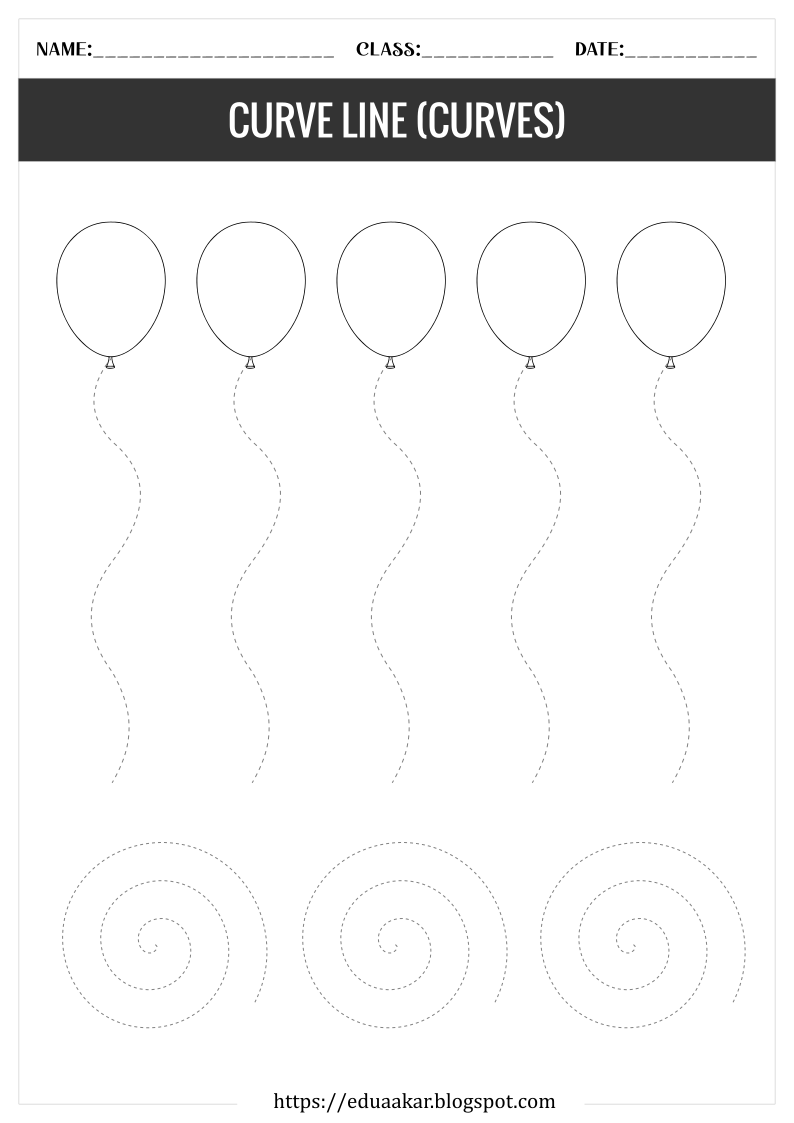As a follow-up to our previous blog on Standing and Sleeping Line Worksheets, we're moving forward in your child's writing journey with slanting lines and curve lines. These are the next crucial steps for children learning to write, and mastering them builds the foundation for letters like "A," "M," "S," and "O."
When I first introduced slanting and curve lines in my classroom, it was fun to watch kids get creative, turning them into mountains and rainbows. In this post, I’m sharing free, easy-to-download worksheets to help your child practice these essential strokes. With a little practice, they'll gain the confidence to handle more complex shapes and letters.
Slanting Line Worksheet
A slanting line (or slant line) is simply a diagonal stroke. Think of letters like "A," "K," and "M." At first, children might find these lines tricky because they’re not as straightforward as the standing or sleeping lines. But trust me, with some repetition and fun exercises, they'll quickly get the hang of it!
In my classroom, I often tell the kids that slanting lines are like slides at the playground—one slants up, the other slants down. It's a fun and relatable way to help them visualize. These free slanting line worksheets are designed to give your child plenty of opportunities to practice this key stroke.
How to Use Slanting Line Worksheets:
- Let your child start by tracing the dotted slanting lines on the worksheet.
- Show them how to connect slanting lines to make letters like "A" and "N."
- Gradually encourage freehand slanting line practice.
- Celebrate progress, no matter how small—confidence is key!
Curve Line Worksheet
Now let’s talk about curve lines—they’re essential for letters like "C," "O," "S," and many more. Curves can be challenging for little hands since they require more coordination than straight lines, but they are an important skill to master.I remember one of my students asking, “Why are some lines straight and others curvy?” I explained that curves are like drawing rainbows and smiles. Once they made that connection, they had so much fun practicing curves.
Our free curve line worksheets will give your child the practice they need to trace and draw smooth curves. They’ll soon be able to create letters and shapes with ease.
How to Use Curve Line Worksheets:
- Start with tracing curved lines, from simple arcs to full circles.
- Encourage them to try drawing curves without tracing, keeping it fun and low-pressure.
- Combine both slanting and curved lines in creative ways, like making loops or curly letters.
Why Slanting and Curve Lines Matter
Mastering slanting and curve lines is a huge step in your child's writing development. These strokes help children form more complex letters and shapes, which boosts both their writing skills and their confidence. I’ve seen how much joy kids get when they realize they can draw more than just straight lines!
Download Free Worksheets
Ready to help your child practice slanting and curve lines? Download these free worksheets, and let them explore these new strokes through tracing and drawing. These worksheets are designed to be engaging and easy to follow, making learning fun for your little one.
Final Thoughts
By introducing your child to slanting lines and curve lines with these free worksheets, you’re giving them the tools they need to become confident writers. With practice, they'll soon master these strokes and move on to forming letters and words with ease.
Be sure to download the worksheets today, and feel free to share your child’s progress or ask any questions in the comments below. I’m always here to help!

